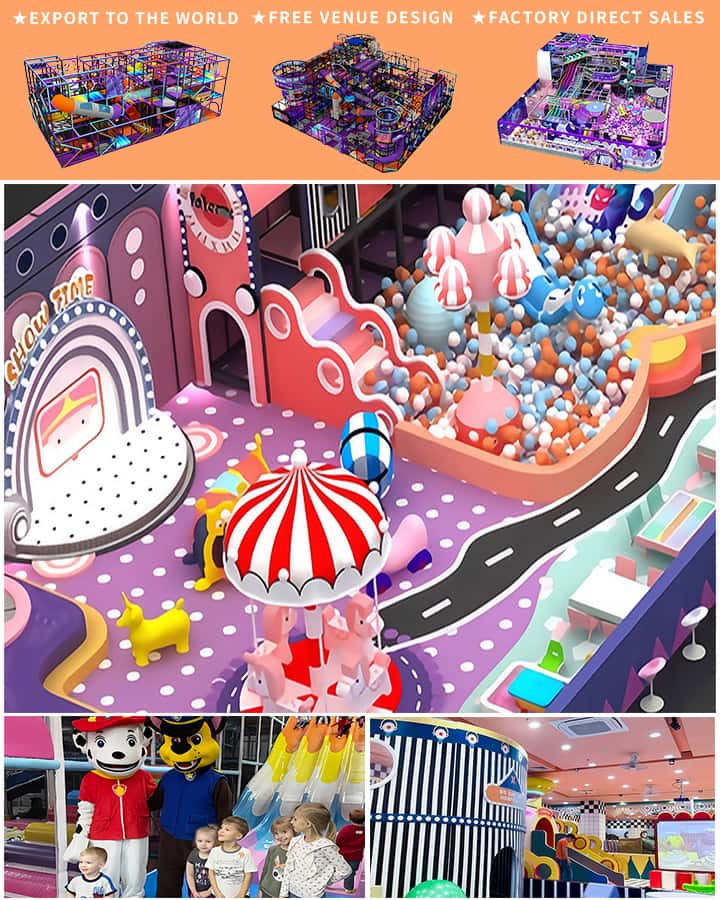In recent years, the demand for indoor playground equipment has surged, driven by a variety of factors including urbanization, changing family structures, and a greater emphasis on physical fitness and mental well-being. As a result, indoor playground equipment manufacturers have seen significant growth and innovation within the industry. This article explores the rise of these manufacturers, the types of equipment they produce, and what sets them apart in a competitive market.
The Evolution of Indoor Playground Equipment
The concept of indoor playgrounds dates back to the early 20th century when public play spaces began to emerge as a means of providing safe recreational activities for children in urban areas. However, it wasn’t until the latter part of the century that indoor playgrounds started gaining widespread popularity. Today, indoor playgrounds are not only common in residential areas but also in commercial spaces such as shopping malls, restaurants, and community centers.
Types of Indoor Playground Equipment
Indoor playground equipment comes in a wide array of shapes, sizes, and functionalities designed to cater to different age groups and interests. Some popular categories include:
Trampolines: These are a staple in many indoor playgrounds due to their fun and energetic nature. Modern trampolines often come with safety nets and padding to prevent injuries.
Slides: From small toddler slides to large spiral ones, slides are integral to any playground setup. They can be made from various materials like plastic, metal, or fiberglass.

Climbing Structures: These structures range from simple rock walls to elaborate climbing frames with ropes, ladders, and tunnels, promoting physical activity and coordination.
Interactive Games: Many indoor playgrounds now incorporate interactive games and digital elements, blending traditional play with technology to create immersive experiences.
Soft Play Areas: Designed for younger children, soft play areas typically feature foam-based structures where kids can crawl, jump, and explore safely.
Innovations in Indoor Playground Equipment
Manufacturers are continually innovating to meet the growing demands and expectations of both business owners and consumers. Key innovations include:
- Customization: Many manufacturers offer customizable solutions, allowing businesses to tailor their indoor playgrounds according to specific themes and requirements.
- Safety Features: Advances in materials and design ensure that modern indoor playground equipment is safer than ever. This includes non-toxic materials, rounded edges, and impact-absorbing surfaces.
- Sustainability: Eco-friendly options are becoming more prevalent, with manufacturers using recycled materials and sustainable practices in production processes.
- Technology Integration: Incorporating AR (augmented reality) and VR (virtual reality) elements into playground equipment creates an engaging and futuristic play experience.
Leading Indoor Playground Equipment Manufacturers
Several companies have established themselves as leaders in the indoor playground equipment manufacturing industry:
- Little Tikes: Known for their durable and colorful outdoor and indoor play products, Little Tikes offers a range of equipment suitable for various age groups.
- Step2: Another prominent name, Step2 produces high-quality, affordable play equipment that appeals to both children and parents.
- KiddiePlay Systems: Specializing in custom-designed indoor playgrounds, KiddiePlay Systems serves a diverse clientele, including educational institutions and commercial venues.
- Play-Doh Fun Factory: While traditionally known for its modeling compound, Play-Doh also offers innovative indoor play equipment catering to young creative minds.
Challenges and Future Outlook
Despite the robust growth, indoor playground equipment manufacturers face several challenges, including stringent safety regulations, high competition, and evolving consumer preferences. However, opportunities abound for those who can innovate and adapt to these changes. The future likely holds more advanced technological integrations, sustainable materials, and a broader focus on inclusive play equipment that caters to all children, regardless of physical abilities.
Conclusion
The rise of indoor playground equipment manufacturers reflects a broader trend towards creating engaging and safe play environments for children. With continuous innovation and a keen eye on market trends, these manufacturers are poised to keep evolving, ensuring that indoor playgrounds remain a cherished space for fun, learning, and development.




